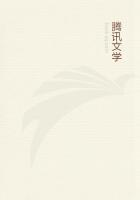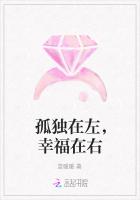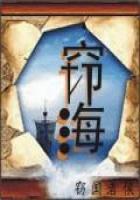Introduction of Buddhism and the Blending of Cultures
Large-scale Grotto Images
Buddhism was introduced into China during the Eastern Han Dynasty. Buddhist art spread widely during the Northern and Southern Dynasties and had far-reaching impact on the development of society. Buddhist art thrived in terms of sculpture, painting and industrial arts during the Northern and Southern, during which Buddhist images occupy a leading position. Chinese sculptural art expanded unprecedentedly during this period and surpassed those of the Qin and Han dynasties in terms of quantity, scale, artistry and spiritual dimension.
Similar to Buddhist architecture, Chinese Buddhist sculpture falls largely into three types: Grotto images, temple sculptures and image steles as well as some small scale Buddha and Bodhisattva images. Grotto images were widely engraved after Buddhism entered China. The cutting of Buddhist grottoes had and immediate connection with Indian Buddhist grottoes. During the Wei, Jin, the Northern and Southern dynasties, craftsmen cut caves and sculpted Buddhist images in quiet mountain areas. These caves were the ashram of Buddhism. Many Buddhist grottoes can be found in western areas of China such as Xinjiang and Gansu. The stone in these places is soft and difficult to carve. Therefore, the grotto images are clay sculptures. In the central plains of China, the stone is hard and sharp, good for engraving. Therefore, the famous Longmen Grottoes and Yungang Grottoes can be found here. But these grottoes have few fresco paintings. The carving of Chinese Buddhist grottoes began during the second year of Jianyuan of the Eastern Jin Dynasty (366). Buddhist grottoes were distributed in Xinjiang, Gansu, Ningxia, Shaanxi, Shanxi, Henan, Hebei, Shandong, Liaoning, Jiangsu, Sichuan, Guangxi, Yunnan and other places from west to east following transportation routes at the time.
The excavation of grottoes reached its peak between the Northern Wei and the Sui and Tang dynasties. After the Tang Dynasty, a few grotto temples and Buddhist grottoes were constructed. With the spread of Buddhism, Buddhist images gradually incorporated aspects of Ghandaran Buddhist Arts and combined them with the Buddhist side of Chinese culture. Among several hundred remaining grottoes, Dunhuang Mogao Grottoes, Maijishan Grottoes, Longmen Grottoes and Yungang Grottoes are collectively known as the four big grottos. They are best known for their scale and historical value as well as their sculptures.
Mogao Grotto images
Located on the eastern slope of Rattling Sand Mountain (Mingshashan) southeast of Dunhuang County, Gansu Province, the Mogao Grottoes (also known as the Thousand Buddha Cave) is one of three noted grottoes in China. The complex contains the earliest carved grotto in the country. No other grottos took so long to build or have such rich content. The grottoes preserve Buddhist images from the Wei, Jin, Northern and Southern dynasties to the Yuan Dynasty. The works of the Buddhist images lasted for nearly 900 years and the fresco paintings are nearly a thousand years old. The Mogao grottoes have 492 caves with florid murals and more than 2,000 painted statues. The study on the murals, statues and other cultural relic of Dunhuang Grottoes has become an international subject of study called Dunhuangology.
The Mogao Grottoes in the Wei, Jin, Northern and Southern Dynasties
The main part of the grottoes is statues, not the murals or colored paintings, and they are magnificent. Murals and colored drawings enrich the themes of the statues. The Buddha and Bodhisattva images during the Wei, Jin, the Northern and Southern Dynasties have strong bodies, rounded faces, high Roman noses. Their posture is a bit stiff and unnatural. The design of the clothes is decorative. Only the neckline and the edge of the clothes are realistically carved.
All these characteristics were adopted from Ghandaran images. For example, the Buddha and Bodhisattva images are obviously influenced by the Ghandaran style. Although the body sculpture is a little stiff, it has a primitive interest. In time, sculpture and facial appearance began to show the characteristics of Chinese people. In the No.259 Pit, the Buddha at the right niche is generally knowns as the oriental Mona Lisa because its smile changes subtly and unpredictably like Leonardo Da Vinci’s Mona Lisa. Buddhist images from the period show the wisdom, mercy and joyousness of the Buddha and Bodhisattva, an improvement and progress in sculptural art. The earliest images of the Buddha and Bodhisattva come from foreign countries—most believe the originals were the images from the Kushan Dynasty (45–250) in Gandhara. Buddhist scriptures have strict regulations on sculpture, proportion, posture, gesture, clothing and ornaments. Many of these changes were made after to make Buddhist art more acceptable to Chinese people, who had a hard time accepting the exotic styles and images. The images were sculpted in compliance with Buddhist scriptures but with Chinese facial features. The combination used during the Wei and Jin dynasties is not natural but a little stiff.
In Buddhist images, the sculpture of Buddha Maitreya (the Buddha of the future) requires different skills from those used in other Buddha images. It was creative with obvious Chinese characteristics. The creativity is mainly reflected in the sitting position of the Buddha. In ancient India, sitting Buddhas were kneeling and sitting, but the Buddha Maitreya from the Wei and Jin dynasties always sits with two legs crossed. Rulers of the Xianbei Nationality considered this a noble sitting position. In the No. 275 Pit, the main Buddha is the tall Maitreya and there are four others in the niches.















